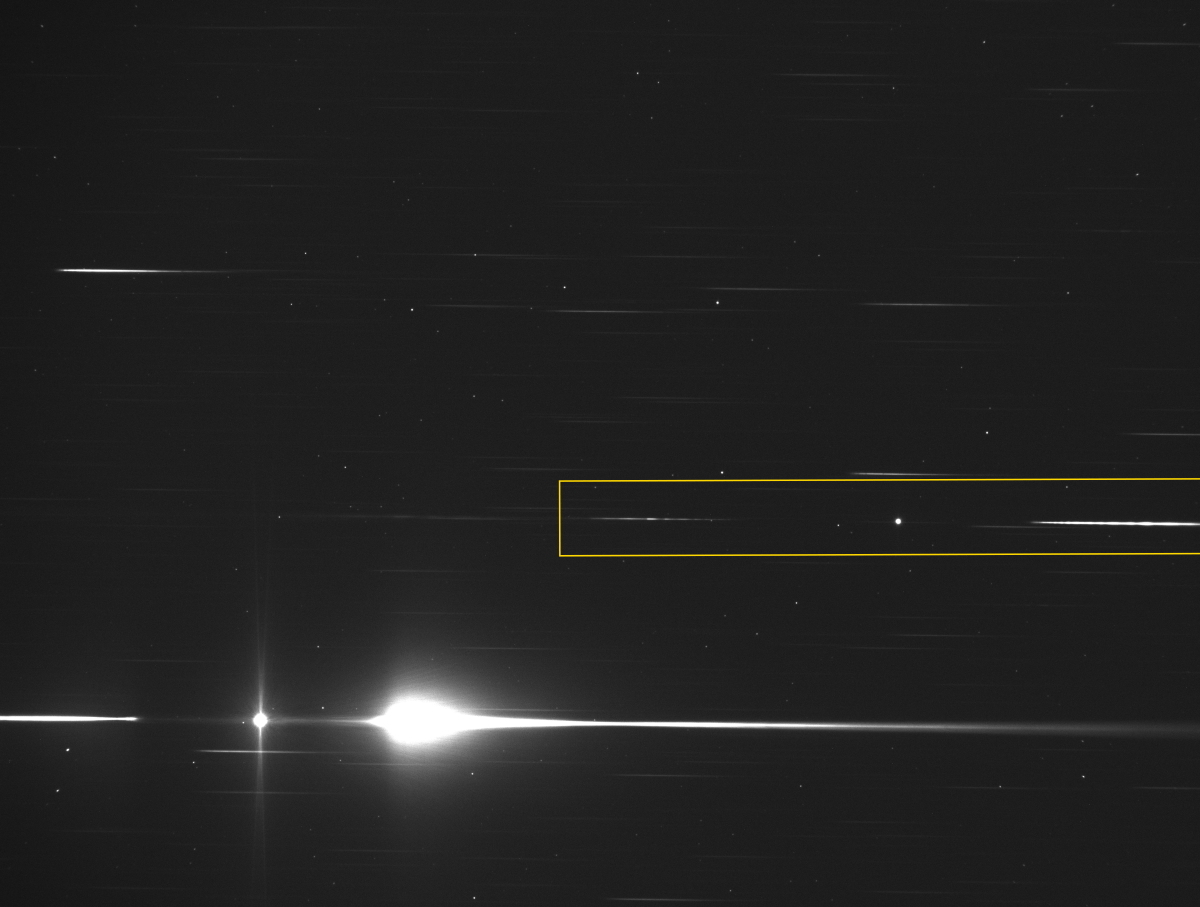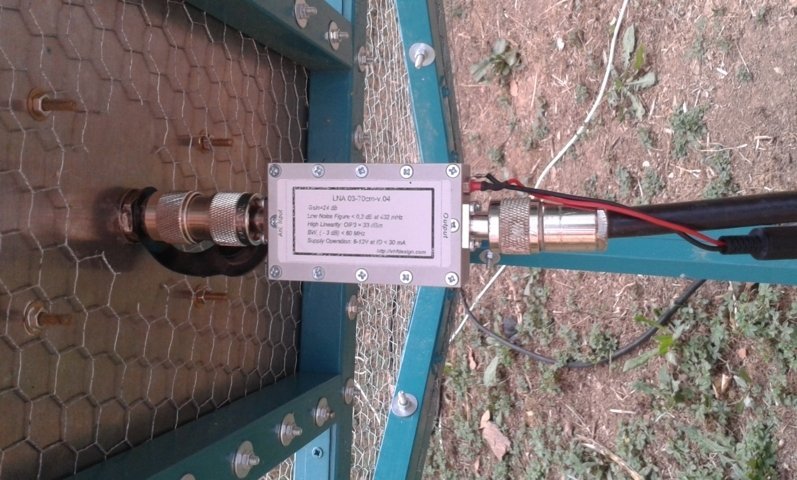-
Posts
1,209 -
Joined
-
Last visited
-
Days Won
1
Content Type
Profiles
Forums
Gallery
Events
Blogs
Posts posted by robin_astro
-
-
Yes this particular content was deliberately left open to encourage wider interest in spectroscopy. For the past few years the BAA has been supporting members interested in spectroscopy through assisted purchase of spectrographs and running a series of workshops. It also hosts a spectroscopic database for the wider amateur community complementing its variable star database
where spectra of any object meeting the required quality standard are welcome (4791 spectra at current count)
Cheers
Robin
-
54 minutes ago, robin_astro said:
Aim for an exposure more like the star highlighted here (a cool star showing nice molecular bands)
The highlighted star is HD172380 at Mag 7.3 so 800x fainter than Vega (The Star Analyser is very sensitive !) it is catalogued as spectral class M4iii. With this information we can make a quick rough and ready calibration of the spectrum image (Here using Visual Spec, other software is available 😉 ) The dispersion is~7.8A/pixel
The blue spectrum is from the image and the red spectrum is a standard M4iii spectrum from the Pickles library of spectra. Note the broad molecular bands mainly from TiO which can form in this star's cool atmosphere
-
15 hours ago, Helen said:
This is a JPEG of vega 10s - verdict?
Thanks 🙂
Helen
Hi Helen,
Good to see you here too !
Yep way over exposed. Aim for an exposure more like the star highlighted here (a cool star showing nice molecular bands) As I mentioned on the Staranalyser forum, aim for under exposure rather than over initially as it is easier to see the features (Note how the well exposed unblazed spectrum on the left more clearly shows the features.) Even here the correct, blazed spectrum is over exposed as Ken's spectrum profile shows, though this might be due stretching the image to produce the jpeg?)
Cheers
Robin
-
If looking to make useful scientific observations you might also find these presentations made at a BAA workshop of interest
https://www.britastro.org/downloads/15701
Amateurs are already contributing to real science and have been increasingly so over the past 15-20 years. The ARAS forum for example is very active in this area
http://www.spectro-aras.com/forum/
Cheers
Robin
-
Interestingly Claudio Balcon in Italy built a similar imaging/spectroscopy setup using an SA100 where he can introduce the grating and an adjustable slit. It included an off axis guider. Like the ALPY200, he has used it in slit mode to spectroscopically confirm and classify a couple of supernovae.
Cheers
Robin
-
 1
1
-
-
Hi Andrew,
A very nice evolution of the junk box spectrograph.
http://www.threehillsobservatory.co.uk/astro/spectroscopy_19.htm
Here's to catching some flares !
Robin
-
You can see typical transits on the TRESCA website (a project looking for variations in transit timing for known transiting exoplanets)
http://var2.astro.cz/EN/tresca/index.php?lang=en
The typical 1 sigma residual per point in the recent measurements looks to be an impressive 2-5 mmag. Based on this it would probably be just possible to detect a known transit at 0.1% but whether a transit of this depth could be pulled out of a several month long data series where the period and timing is unknown is I would say debatable
-
14 minutes ago, robin_astro said:
The main problem is likely to be identifying transits against background systematic variations at the mmag level with the same timescales as the suspected transits, particularly where potential events extend over different observers.
This could be checked by prospective observers by measuring a known non variable over an extended period
-
2 hours ago, vlaiv said:
What sort of magnitude are potential star candidates?
Hi Vlaiv,
A quick check suggests at 100 lyr a main sequence G star would be Vmag ~7.5 an M dwarf would be ~13.5.
https://sites.uni.edu/morgans/astro/course/Notes/section2/spectraltemps.html
http://www.calctool.org/CALC/phys/astronomy/star_magnitude
The magnitude is not so much the problem though. It should be possible to get the required SNR (2000 to detect 0.1% at 95% confidence) in 5 min total exposure for a mag 11 star and 200mm aperture
http://spiff.rit.edu/richmond/signal.shtml
The main problem is likely to be identifying transits against background systematic variations at the mmag level with the same timescales as the suspected transits, particularly where potential events extend over different observers.
Cheers
Robin
-
 1
1
-
-
On 14/07/2019 at 17:50, alberto91 said:
Yes, all of them have been able to detect 0.1% transits.
Can you supply evidence of this ? Detecting a 0.1% transit with a known timing using an amateur setup from the ground with a reasonable confidence level is already (surprisingly) impressive. I would want to see evidence though that detecting a transit with unknown timing of this depth from potentially months of background data collected from different sites is likely to be possible with a reasonable confidence level.
-
5 hours ago, davhei said:
After reading up a bit more, it seems that after the core collapse in the progenitor star, matter can be expelled at velocites close to 0.1 times the speed of light.
I routinely measure velocities spectroscopically over 10^4 km/s from a few days after explosion so yes the initial velocities are high. Here is an example of my measured velocities.
http://www.spectro-aras.com/forum/viewtopic.php?f=38&t=2308&start=30#p12713
(though in this particular case it is a thermal runaway type Ia supernova rather than a core collapse type II)
Also if we take the crab nebula for example which was a core collapse supernova which exploded 965 years ago, we can measure the current expansion rate directly and spectroscopically to be currently ~ 1000km/s eg
http://spiff.rit.edu/classes/phys231/crab/crab.html
Here is an example of an amateur spectroscopic measurement of the crab nebula expansion rate by Christian Buil et al
http://www.astrosurf.com/buil/us/mission2/mission2.htm
Cheers
Robin
-
 1
1
-
 1
1
-
-
I believe there has been some somewhat speculative work done in this area in the past. This is the particular paper in question (I wish these on line articles would include the reference)
https://arxiv.org/abs/1803.08692
Robin
-
 1
1
-
-
1 hour ago, StarryEyed said:
For hydrogen its receive only I would rather make a 1.2 ghz yagi
This is for pulsars at ~70cm though. For Hydrogen there is an interesting practical comparison of a yagi (actually a helical) v a small dish early in the Hydrogen line thread. The dish won out in this case.
Cheers
Robin
(G8DVW)
-
2 hours ago, StarryEyed said:
Yes thats all true but the ariel isnt in free space its on the earth and so it ends up close to 50. Keep it simple.
This isn't a half wave dipole either 😉
-
13 hours ago, Coto said:
My suspicion from what I read from the link I gave is that in the box there might be the pre-amplifier.
There are two amplifiers shown in the block diagram but the one connected to the back of the ground plane appears to be the first one "LNA 03-70cm from US4ICI (NF = 0.3dB, commercial solution)" visible in the image here rather than the second "LNA FOR ALL" shown in the block diagram at the other end of the feeder before the SDR dongle

Of course matching to 50/70 ohms is not super critical for receiving but it would need to be tuned to resonance for efficient operation and with that box there it is uncertain where the length of the element is referenced from
Cheers
Robin
-
1 hour ago, StarryEyed said:
a half wave length gives 50 ohms so the coax that connects the ariel to the radio must also be 50ohms.
Actually a half wave dipole in free space has an impedance at the feed point of 73 ohms. though that depends on the height above ground. Adding parasitic elements also reduces the impedance. In the article I referenced above, the 72 ohm impedance of the 3D corner antenna similar to this one with a 3/4 wavelength element was reduced to 50 ohm by adding an additional parasitic element, though this design does not have this.
Robin
-
1 hour ago, StarryEyed said:
Robin astro.
Probably nothing if the ariel has the same impedance as the coax and radio. Otherwise a couple of components to change the impedance. To make it match.
Yes I suspect some kind of matching arrangement otherwise why is it there rather than mounting it directly to the ground plane ? Perhaps the element just slides within the box to tune the length to resonance (The 53cm long element is an electrical 3/4 wavelength long to resonate at 70cm when mounted on the ground plane.) I would want to know before building this though
Cheers
Robin
-
The chicken wire should be connected along all edges and to the ground plane plate and outer of the coax connector. See page 20 of this paper for example for tips on building a 3D corner antenna
https://www.qsl.net/yu1aw/ANT_VHF/shorten3dcra.pdf
-
What is inside the box the antenna element is mounted on ?

What is inside the box ?
-
The ratio of antenna length to thickness affects bandwidth. A thicker antenna element increases bandwidth
-
any multiple of 1/4 wavelength will resonate
-
The distant objects are not moving through space. The distance between them and us is increasing because space is expanding.
The measurement of time and distance are not absolute but are dependent on the motion of the observer (special relativity) and distribution of mass ie gravitational field (general relativity)
-
 1
1
-
-
Yes this is the latest in a series of workshops and other initiatives over the past few years by the BAA to support members wanting to get into spectroscopy and produce useful scientific data. You can see the presentations from the first workshop which kicked off this initiative in 2015 here
https://www.britastro.org/downloads/15701
The BAA now also have a spectroscopy database, to complement their variable star database. Good quality spectra of any object can be submitted for use by researchers. Over 4000 spectra have been added in the 2.5 years it has been running
Earlier this month the BAA also took part in a Pro-Am session at the professional UK National Astronomy Meeting where I gave a short paper on amateur spectroscopy,
https://nam2019.org/schedule-by-session/details/27/325
a follow up to one I gave at the same meeting 10 years earlier.
http://adsabs.harvard.edu/abs/2009JBAA..119..121L
The number of amateurs doing spectroscopy at a Pro-Am level has increased significantly over the past 10 years.
Robin
-
Your plan is to detect 1 mmag transits. This level of precision sounds tough to me. Have you checked with any of the experienced amateurs already doing this sort of work if this is achieveable?













Practical Spectroscopy Notes
in Radio Astronomy and Spectroscopy
Posted · Edited by robin_astro
My contributions to BAA workshops in 2008 and 2015 are also available on my website
http://www.threehillsobservatory.co.uk/astro/spectroscopy_10.htm
One day perhaps I will get round to adding some notes to the 2015 ones but if you have any questions on them, ask away !
Robin